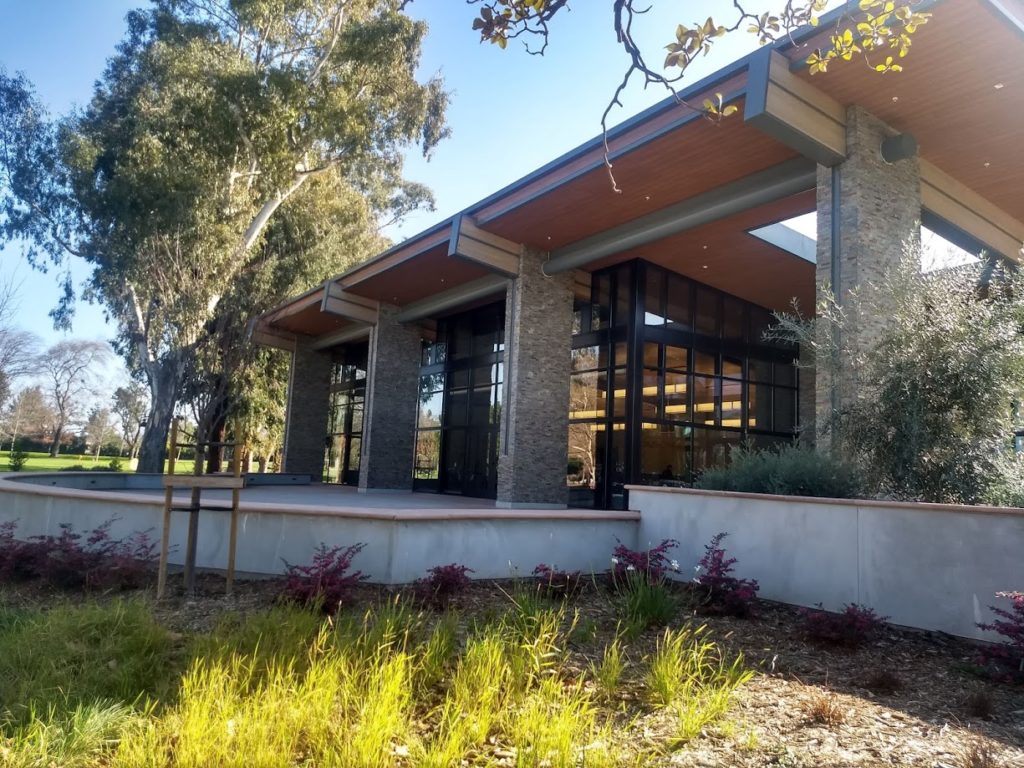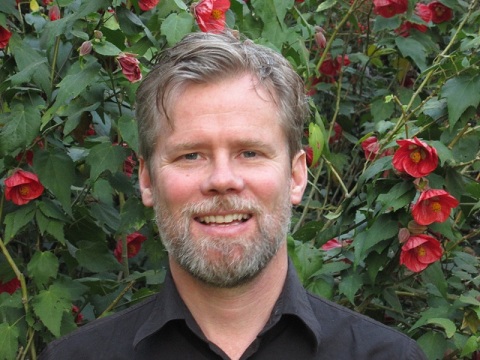The days after announcing my #LocalYear on January 31, 2020 were filled with small steps forward and also back. It was sobering.
I started off strong by attending the annual Thriving Resilient Communities Collaboratory (TRCC) retreat in the Santa Cruz mountains. TRCC is a collaboration and funding network made up of a couple dozen small nonprofits working to help communities become more resilient. Shareable has been a part of TRCC for several years. In fact, our podcast, The Response, was hatched at TRCC with four other member nonprofits.
The highlight of my afternoon at the retreat was an energizing conversation with Leslie Meehan, TRCC’s convener, Carolyn Stayton of Transition US, Susan Silber of NorCal Resilience Network, and Roger Sanford, Leslie’s partner and a Silicon Valley marketing executive. Our conversation covered a lot of ground, but the crux of it was an exploration of how we could spark a civic revival in the heart of Silicon Valley and how that might ripple out to the rest of the world as such things often do here. I look forward to exploring this further with Leslie.
Almost immediately after the retreat, I came down with a terrible cold. I stayed in bed for three days and took care of my son Jake, who was also sick. Now that was truly grounding. It also gave me a chance to dig further into a new book about the commons, “Free, Fair and Alive: The Insurgent Power of the Commons.” I read a fascinating argument made in the introduction about the need for a shift in ontology (an “OntoShift” or roughly a shift in the philosophical underpinnings of one’s worldview) before people can even understand the commons never mind appreciate and work towards a commons transition.
However, my reading was overwhelmed time wise by watching Netflix. That’s putting it a bit too genteelly — I binged. All was not lost as I watched an excellent documentary series, “Who Killed Malcom X” later in the week. This wasn’t enough to stave off guilt as Netflix binging doesn’t square well with my #LocalYear commitment. My OntoShift is obviously incomplete.
Once I started feeling better, I shared my #LocalYear introductory post on Facebook and Twitter. I delayed sharing it because I didn’t want to deal with the possible negative reactions while sick. The reaction I got was pretty stock for the internet. My friends encouraged me, shared useful tips, and gave helpful critiques. This included a book recommendation, “No Local: Why Small-Scale Alternatives Won’t Change the World,” from scholar Maurie Cohen to help me sharpen my thinking about local action. I got a mixed reaction from those who don’t know me. Some didn’t understand it or were quick to criticize. There was some useful feedback too.
The experience of sharing my commitment made me a tad anxious, like waiting for a jury to deliver a verdict, and highlighted a few key contradictions. First, that I was using the global medium I believe is undermining solidarity to share my experiment in seeking local solidarity. Second, that a local focus could work in the opposite direction I expect if I’m not careful. Lastly, I found myself focusing on the online criticisms and not the positives including the two invitations I got to meet with real people from local nonprofits in Mountain View!
I started feeling better by Friday, so I was able to attend the Cool Block Leader Training on Saturday. Cool Block is a program where small groups of neighbors take climate, emergency preparedness, and other actions together through nine meetings over four months. Cool Block provides the process and tools for the group work, but it’s otherwise participant driven. The six hour training outlined block leaders’ responsibilities, which are mainly to get a group started and foster the leadership of other participants so group management is shared.
Cool Block started in three California cities including neighboring Palo Alto a couple years ago. The results they’ve gotten so far are impressive — the pilot of 45 blocks resulted in an average household carbon reduction of 32 percent with 25 actions taken. Plus, many blocks have continued operating after the program was officially over. I left the meeting energized by what seems like a simple, well-thought out plan to help me get my neighbors together to make our lives better.
On Sunday, my wife Andrea left on a business trip. I took Jake to soccer practice in the morning and then went to Costco on Andrea’s suggestion. A few of her friends encouraged her to join, and she did. She was weirdly excited about joining. We had a few laughs about that because it’s not exactly a new thing. So I went about my way to pick up my Costco card and buy snacks for Jake’s school lunches. I hadn’t been in a Costco or a store like it in ages. You’d more likely find me in a thrift store or on Amazon.com (that’s another story).
Anyway, Costco was packed. I found it a strange experience of raw, no-frills, hyper-consumerism. Costco stores are basically warehouses. There’s gigantic racks of stuff organized in the most unglamourous way possible underneath high-powered fluorescent lights. I understand the appeal of low prices and that Costco can help some families make ends meet. No judgement there, but at the same time, shopping in this huge chain store didn’t feel very local. It felt impersonal, transactional, and pornographically so.
After getting my card, I drifted among the throng and saw some amazing deals including three pounds of frozen blueberries for $7.79. That sparked a near frantic inner dialogue:
That’s less than half the normal price. Are those blueberries really organic? Do I need three pounds? No. Besides, I still have two pounds of frozen blackberries I grew myself in the freezer. I should use them. Why aren’t I shopping at my local grocer, Ava’s? I know the grocer, Juan. He’s struggling to make it. Oh, man, this is so not local. I don’t think I’ll be shopping here anymore.
Still, not one to waste a trip, I bought Jake’s snacks plus almonds and pomegranate juice. I immediately regretted it.
Later in the week, I took a survey emailed from my son’s school district. This is something I’d normally delete. My commitment to #LocalYear made me reconsider. The survey was long and highlighted how ignorant I am of what is going on in my son’s school system. That’s another thing I need to change.
All in all, this first stretch of #LocalYear was eye-opening. I’m starting to see the world and my place in it in a new way. I see all too clearly how much I need to change to meet my commitment, which is humbling. I also see how difficult it’s going to be to re-arrange my time and attention toward local ends given that the world isn’t organized to help me do that. My friends, family, the media, and the larger culture have a very powerful pull. As in the Costco episode, it’s so easy to drift into a well-worn pattern. This makes me doubt that I can go local thoroughly by myself. It might take a village. This week also made it clear that I need to give this experiment more guidelines, more teeth to make it meaningful. Stay tuned for that.
##
This post is part of Neal Gorenflo’s year long experiment on living locally (#LocalYear). Follow his journey by reading the other posts in his series:
- How we can avert our society’s drift toward disaster by charting a different course
- Knocking doors for Cool Block with my son Jake
- Despite jitters, I succeed in hosting a Cool Block introductory gathering
- Time to give my #LocalYear teeth: 5 commitments to spur a more local lifestyle
- Things got a whole lot more local than I expected due to coronavirus
- My new pandemic routine
- April is the cruelest month and a call to care
- My #LocalYear progress so far









